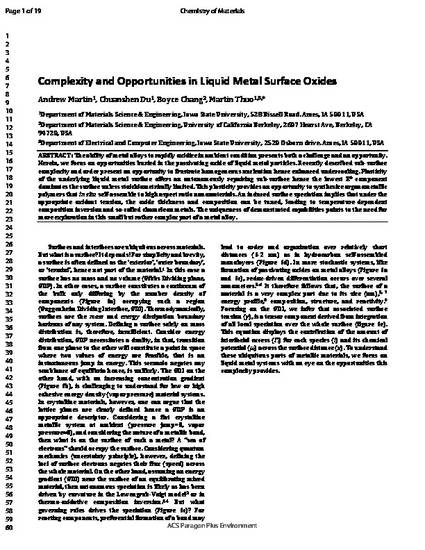
The ability of metal alloys to rapidly oxidize in ambient condition presents both a challenge and an opportunity. Herein, we focus on opportunities buried in the passivating oxide of liquid metal particles. Recently described sub-surface com-plexity and order present an opportunity to frustrate homogeneous nucleation hence enhanced undercooling. Plasticity of the underlying liquid metal surface offers an autonomously repairing sub-surface hence the lowest E0 component domi-nates the surface unless stoichiometrically limited. This plasticity provides an opportunity to synthesize organometallic polymers that in situ self-assemble to high aspect ratio nanomaterials. An induced surface speciation implies that under the appropriate oxidant tension, the oxide thickness and composition can be tuned, leading to temperature-dependent composition inversion and so-called chameleon metals. The uniqueness of demonstrated capabilities points to the need for more exploration in this small but rather complex part of a metal alloy.
Available at: http://works.bepress.com/martin_thuo/47/

This document is the unedited Author’s version of a Submitted Work that was subsequently accepted for publication in Chemistry of Materials, copyright © American Chemical Society after peer review. To access the final edited and published work see DOI: 10.1021/acs.chemmater.0c02047. Posted with permission.